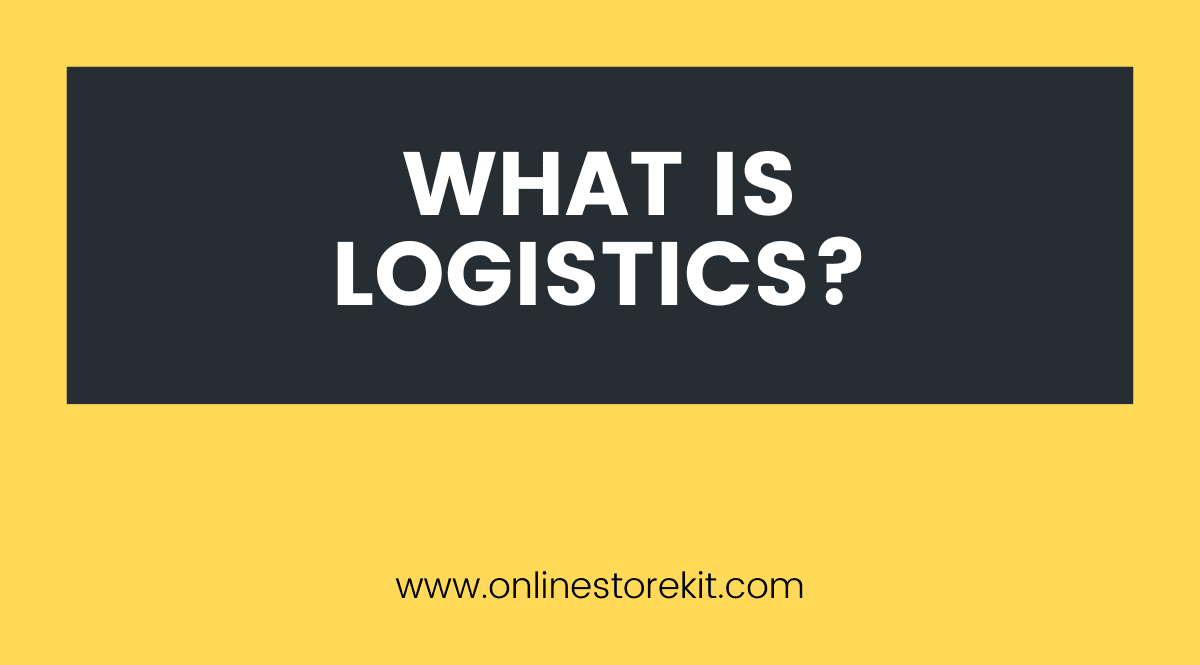Logistics, a term often associated with commerce and military operations, is often misunderstood.
It is important to understand the definition of logistics and its components in order to appreciate the benefits it can bring to an organization or enterprise.
This article will explore the definition of logistics, its components, roles and responsibilities of professionals in this field, as well as strategies for successful management.
Key Takeaways
Show- Logistics involves managing resources for successful projects, products, or services through procurement, storage, and distribution.
- Key components of logistics include activities such as inventory management, warehousing methods, transportation management, and supply chain integration.
- Efficient logistics strategies improve customer satisfaction, forecasting, inventory management, and transportation optimization.
- Logistics professionals play important roles in planning, management, analysis, coordination, and staying informed about industry trends.
What is Logistics? Definition of Logistics
Logistics is the process of managing the resources necessary for a successful project, product, or service.
It involves planning and controlling the procurement, storage, and distribution of goods and services in order to meet customer demands.
Logistics typically includes activities such as inventory management, warehousing methods, transportation management, shipment tracking systems, supply chain integration and third party logistics.
The goal of logistics is to ensure that materials are available at the right place and time while minimizing production costs.
The components of logistics include both demand-side factors (such as customer order forecasting) and supply-side factors (such as inventory control).
Effective logistics requires a thorough understanding of these two components.
Furthermore, effective supply chain integration is essential for an efficient logistical system; this can be achieved through strategies such as just-in-time delivery or vendor managed inventory systems.
Third party logistics providers may also be used to manage certain aspects of the logistic process.
Components of Logistics
The fundamental aspects of logistics include transportation, inventory management, warehousing, and packaging. Logistics is an integral part of the supply chain process and can be broken down into several components:
- Transportation – This involves the movement of goods from one location to another. It includes selecting the most efficient routes and modes of transportation for delivery, as well as proper documentation such as bills of lading.
- Inventory Management – The goal here is to have just enough inventory on hand to meet customer demand without overstocking or understocking products. This includes tracking stock levels, forecasting future needs, and ensuring timely replenishment orders are placed.
- Warehouse Management – The warehouse plays a crucial role in order fulfillment by managing all goods that enter or leave it in an organized manner with minimal delays or errors. Activities include receiving incoming shipments, storing items safely and securely until needed, picking items for orders accurately and efficiently, packing them according to regulations, and shipping them out on time.
- Packaging – Goods must be properly packed for safe storage and transit so they are not damaged during handling or shipping processes. This involves selecting appropriate materials based on item characteristics such as size or weight while also taking into account environmental considerations like sustainability when possible.
Benefits of Logistics
Adopting efficient logistics strategies can bring numerous benefits to businesses, such as improved customer satisfaction, reduced costs, and faster delivery times.
Planning efficiencies allow for better forecasting of demand and more accurate inventory management.
This helps organizations decrease their stock levels and optimize their supply chain.
Additionally, transportation optimization can lead to cost savings in areas such as fuel consumption and shipping expenses.
Furthermore, real-time tracking capabilities enable companies to offer customers more precise estimated delivery timeframes which increase customer satisfaction.
| Benefits | Description |
|---|---|
| Planning Efficiencies | Better forecasting of demand & accurate inventory management |
| Supply Chain Optimization | Decreasing stock levels & optimizing the supply chain |
| Transportation Optimization | Cost savings in areas like fuel consumption & shipping expenses |
| Real-time Tracking Capabilities | Offering customers precise estimated delivery timeframes |
Roles and Responsibilities of Logistics Professionals
Logistics professionals have numerous roles and responsibilities related to the management of a supply chain. These duties can be broken down into the following main functions:
- Planning — Logistics professionals must anticipate customer demand, plan for production schedules, and develop strategies for outsourcing services.
- Management — They must manage the transport of goods from their source to their destination, coordinate with suppliers, and ensure that all components of the supply chain are functioning correctly.
- Analysis — Logistics professionals also analyze data to identify areas of improvement in supply chain design and optimize operations for maximum efficiency.
The goal of these roles is to ensure that products arrive on time, within budget, and in good condition at their intended destination.
Logistics specialists work closely with other departments such as marketing, finance, quality control, and operations teams in order to create a cohesive system for delivery success.
Additionally, they must remain informed about industry trends in order to stay ahead of competition and provide customers with optimal service levels at an affordable cost.
Strategies for Logistics Management
Effective management of logistics requires the implementation of strategies that optimize performance along the supply chain. An effective strategy should be designed to reduce costs and improve customer service levels.
Logistics managers can use inventory optimization, transportation routing, and supply chain visibility to develop strategies that meet these objectives.
Inventory optimization is a strategy used to identify and maintain optimal inventory levels that can meet customer demand without overstocking or understocking products.
Transportation routing is employed to streamline routes for deliveries and shipments in order to save time and resources while also optimizing lead times.
Supply chain visibility is a tool used by logistics professionals in order to gain insight into stock levels, delivery times, potential problems or delays throughout the supply chain.
Other strategies for logistics management include carrier selection, freight consolidation, process automation, outsourcing of services such as warehousing and distribution centers, load optimization techniques, IT integration with customers and suppliers, benchmarking performance metrics against industry standards, etc.
Conclusion: Understanding Logistics Definition and Components
Logistics is a critical component of any business, providing the framework for efficient and cost-effective delivery of goods.
It involves the planning, execution and supervision of all activities related to the acquisition, storage, handling and distribution of materials.
When managed strategically, it can lead to increased customer satisfaction, improved competitiveness in the market place and optimized operational performance.
Logistics professionals play a key role in ensuring that their organisations benefit from this powerful tool by developing and implementing effective strategies that ensure logistics operations run smoothly.
By utilizing euphemism when describing the advantages of logistics management and creating an organized, analytical and detail-oriented approach to its implementation, organisations are able to achieve success through successful logistics management.





